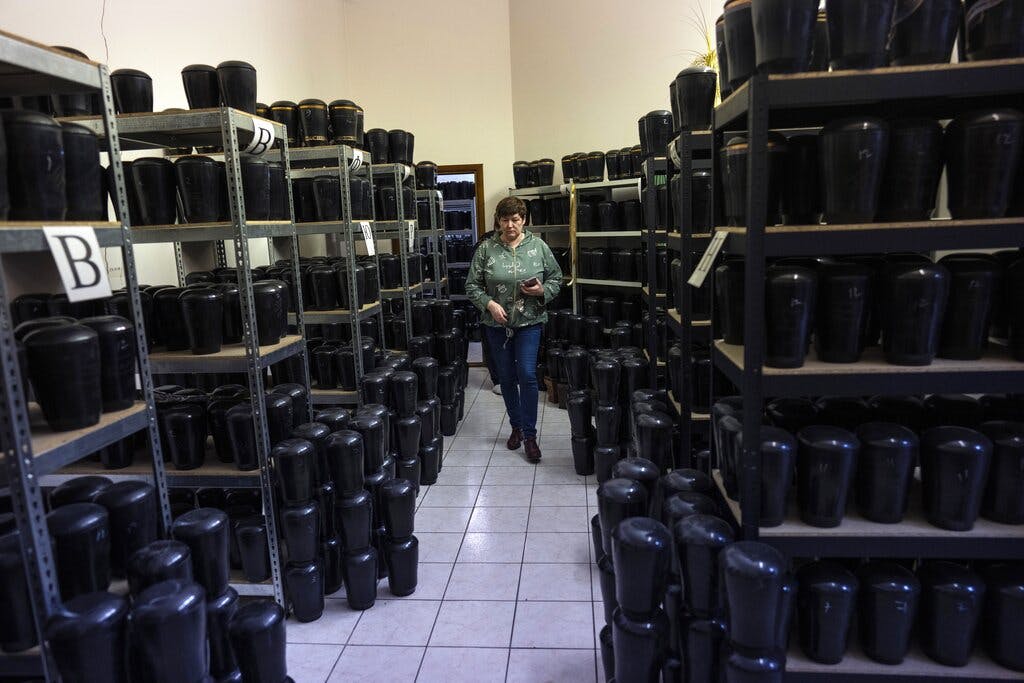Military Mathematics Show the Human Toll of Putin’s War in Ukraine
We also need to consider something known as the ‘tooth-to-tail ratio,’ meaning the number of support troops required to keep each frontline soldier battle-ready.

The Bottom of the Barrel
American intelligence officials have said conservative estimates of the number of Russian troops killed in Ukraine is already at more than 7,000. To understand the true significance of this figure, a bit of military mathematics is required.
The usual casualty calculus used by military tacticians is two-to-three wounded soldiers for each KIA. So, we’ll multiply those 7,000 Russian dead by 2.5 to get 17,500 wounded, which means around 25,000 total combat casualties suffered during a month of fighting in Ukraine. Again, this is a conservative figure.
We also need to consider something known as the “tooth-to-tail ratio,” meaning the number of support troops required to keep each frontline soldier battle-ready. In any modern military, that quotient is around one-to-eight, which would mean that only 17,000 of the 150,000 Russian soldiers who invaded Ukraine were combat infantry or armored vehicle crewmen.
Those other 133,000 Russians were mechanics, truck drivers, supply clerks, and others who don’t pull triggers known in U.S. military slang as “pogues” — a semi-contemptuous acronym meaning “persons other than grunts.”
Ukrainian attacks against Russian supply lines surely mean that a percentage of those casualties have been “pogue-skis,” to coin a term. Even if only half of the Russian army’s 25,000 dead and wounded come from the ranks of its combat troops, that still translates into a casualty rate of more than 70 percent.
Add to this the high number of senior Russian officers reported killed in the fighting: Ukrainian sources claim that the Russian army has lost six generals and “dozens of colonels,” meaning divisions, brigades, and regiments have been left leaderless in the midst of battle.
All this would explain a report by the Institute for the Study of War that the Russian army is stripping low-readiness units in Siberia of manpower for use as cannon fodder in Ukraine. News of Vladimir Putin’s personnel problems also sheds light on the Russian president’s recruitment efforts among Syrian soldiers and militiamen.
“Once we get instructions from the Syrian and Russian leadership, we will fight this righteous war,” said Nabil Abdallah, the commander of a Syrian militia called the National Defense Forces in an interview with Reuters.
The Curtain Descends on Mariupol
After almost a month of bloody siege, the battle for Mariupol has entered what looks like its final act, with Russian forces pushing through Ukrainian defenses into the central business district of the beleaguered port city.
The Russians long since abandoned any semblance of a surgical approach in their combat operations, reverting instead to the brutal tactics of mass destruction that earned the Red Army notoriety during World War II.
After their initial bid to capture Mariupol was repelled with heavy losses, the Russians began a grid-by-grid series of airstrikes and artillery barrages that pounded the city into rubble. Neither hospitals nor schools nor civilian shelters were granted immunity from attack, despite being marked as non-combatant facilities in accordance with the laws of armed conflict.
The fall of Mariupol provides Russia with a contiguous overland link to the Crimean Peninsula, the territory Vladimir Putin seized by coup de main in 2014 and later annexed. Prior to the war in Ukraine, the sole connection between Russian-occupied Crimea and the Russian mainland was a single road bridge across the Kerch Straits.
For Whom the Bell Tolls
A report published by the UN High Commissioner for Human Rights put the confirmed civilian death toll from the Ukraine war at 1,035, with another 1,650 wounded. As this UN report admitted, though, “the actual figures are considerably higher, as the receipt of information from some locations where intense hostilities have been going on has been delayed and many reports are still pending corroboration.”
Faster Than a Speeding Bullet
UK Defence Intelligence reports Russian claims to have used its new Khinzal hypersonic missile to destroy a Ukrainian arms depot in western Ukraine and a fuel storage facility at Mykolaiv.
As their name indicates, hypersonic missiles are essentially super-fast glide bombs that fly up to 10 times the speed of sound. What makes them particularly dangerous is their ability to maneuver: While a ballistic missile soars into near-space or space (depending on its range) along a predictable trajectory, a hypersonic missile can twist and turn as it speeds to its target.
If this Russian claim is accurate, the use of the Khinzal would constitute the first instance in which a hypersonic weapon was used in combat, making it a watershed moment in military technology.
Yet it is unlikely there are sufficient numbers of Khinzals in Russia’s arsenal to turn around its floundering war effort in Ukraine.

